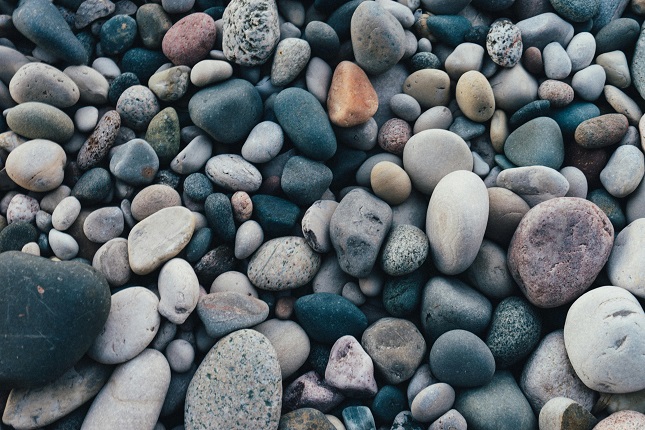When it comes to preserving the memory of a loved one, custom headstones are a meaningful and lasting tribute. However, like any outdoor structure, headstones are subjected to the elements and require regular upkeep to maintain their beauty and integrity over time. The type of material, climate, and placement all play a significant role in determining the kind of maintenance required for custom headstones.
In this blog, we will discuss the specific care and maintenance required for different types of custom headstones, including tips on how to clean gravestones effectively. Whether you are dealing with granite, marble, bronze, or limestone headstones, understanding how to care for them will ensure that the memorial stands the test of time.
Granite Headstones
Why Choose Granite?
Granite is one of the most popular materials for headstones due to its durability, resistance to weather, and wide variety of color options. It is also less porous than other materials, which makes it easier to maintain.
Maintenance Tips for Granite Headstones:
Although granite is a sturdy material, it is not immune to weathering, dirt buildup, or biological growth, such as moss and lichen.
Regular Cleaning:
A simple cleaning routine every 6-12 months can keep a granite headstone in excellent condition. Use clean water and a non-abrasive cloth or sponge to wipe away surface dirt and debris. Avoid using harsh chemicals or high-pressure washers, as they can erode the stone over time.
How to Clean Granite Gravestones:
For more stubborn stains, a mild dish soap mixed with water is effective. Gently scrub the surface with a soft brush or cloth in circular motions. Rinse thoroughly to avoid soap residue. If mold or algae are present, you can use a diluted ammonia solution (one part ammonia to four parts water), but always rinse well after using any cleaning agents.
Protecting from Weather Damage:
While granite is weather-resistant, placing a headstone in direct sunlight for long periods can cause fading, especially with polished finishes. Consider periodic sealing, which can add an extra layer of protection against moisture and UV rays.
Marble Headstones
Why Choose Marble?
Marble headstones are often chosen for their elegant appearance and distinctive veining. However, marble is a softer and more porous material than granite, making it more susceptible to erosion, staining, and weathering.
Maintenance Tips for Marble Headstones:
Given the softness of marble, it requires more delicate handling.
Regular Cleaning:
Marble headstones should be cleaned more frequently—every 3-6 months—to prevent staining from environmental pollutants and biological growth. For routine cleaning, use only water and a soft brush or sponge.
How to Clean Marble Gravestones:
Marble is highly porous, so avoid using harsh chemicals. Instead, mix a small amount of non-ionic soap (such as Orvus soap) with water to clean more deeply. Apply the mixture with a soft cloth or brush and rinse thoroughly with clean water. Make sure to dry the headstone afterward to prevent water stains.
Dealing with Stains and Biological Growth:
Stains caused by tree sap, bird droppings, or mold can be treated with a poultice—a paste-like mixture of water, a mild detergent, and absorbent materials like talc. Apply it to the stained area, let it sit for a few hours, then rinse off.
Protection from Weathering:
Since marble erodes more quickly, avoid placing it in areas with extreme weather conditions. If erosion is noticeable, consider applying a consolidant, a material designed to strengthen stone and slow down the weathering process.
Bronze Headstones
Why Choose Bronze?
Bronze headstones often feature intricate designs and are mounted on a granite or concrete base. Over time, bronze develops a natural patina, which can be visually appealing, but some families prefer to maintain the original bronze shine.
Maintenance Tips for Bronze Headstones:
Although bronze is highly durable, it requires regular care to prevent corrosion and tarnishing.
Regular Cleaning:
To maintain a bronze headstone, clean it every 6-12 months with water and a soft cloth. Avoid using anything too abrasive, as it can scratch the surface.
How to Clean Bronze Gravestones:
To clean bronze headstones, mix water with a mild dish soap and use a soft-bristle brush to scrub away dirt and buildup. Once cleaned, rinse thoroughly and dry with a soft cloth. If tarnishing is present, a bronze-specific cleaner may be used, but test it on a small area first to ensure it doesn’t damage the finish.
Polishing and Waxing:
To preserve the bronze’s shine, apply a thin layer of paste wax after cleaning. Let the wax sit for a few minutes, then buff it with a soft cloth. This protective layer will prevent moisture from causing oxidation and patina buildup.
Protection from Corrosion:
If the bronze starts corroding, you may notice greenish-blue spots, a sign of oxidation. In this case, a more thorough restoration process, including using specialized bronze cleaners and polishers, may be necessary.
Limestone Headstones
Why Choose Limestone?
Limestone offers a rustic, natural look and has been used historically in many older cemeteries. However, it is highly porous and softer than other stone options, making it vulnerable to weathering and pollution.
Maintenance Tips for Limestone Headstones:
Limestone requires frequent attention to prevent deterioration.
Regular Cleaning:
Clean limestone headstones every 3-6 months to prevent stains and algae growth. Since limestone is delicate, use only water and a soft brush or cloth for routine cleaning.
How to Clean Limestone Gravestones:
For deeper cleaning, use a non-ionic soap mixed with water and apply it gently with a soft-bristled brush. Avoid using acidic cleaners, as they can cause the limestone to erode more quickly. Rinse thoroughly with clean water and allow the stone to dry completely.
Protecting from Weathering:
Limestone weathers more rapidly than other materials, especially in moist or polluted environments. If possible, consider placing limestone headstones in shaded or protected areas. You can also apply a consolidant to slow down weathering, but it’s essential to consult a professional before applying any treatments.
Restoration:
If the limestone has begun to degrade significantly, you may need a professional restoration service. This process can involve the use of specialized stone fillers or surface coatings to protect the headstone from further damage.
Slate Headstones
Why Choose Slate?
Slate is another natural stone used for centuries in memorials. Its smooth surface and dark color make it a unique choice, though it is softer and more prone to chipping and cracking than granite or marble.
Maintenance Tips for Slate Headstones:
Slate headstones require careful maintenance to prevent chipping and cracking.
Regular Cleaning:
Like limestone and marble, slate headstones should be cleaned gently using water and a soft cloth or brush. They should be cleaned every 6-12 months to prevent dirt buildup and biological growth.
How to Clean Slate Gravestones:
For a deeper clean, use a mild soap solution, but avoid scrubbing too hard to prevent damaging the surface. Slate is susceptible to water absorption, so always dry the stone after cleaning.
Dealing with Damage:
If your slate headstone has minor cracks or chips, you may be able to fill them with a stone-specific filler or epoxy. However, extensive damage may require professional restoration.
Protection from Weathering:
Slate can become brittle over time, especially in freezing and thawing cycles. If you live in a climate with harsh winters, be mindful of water entering cracks, which can expand and cause further damage. Applying a consolidant may help reinforce the stone’s structure.
Conclusion
Each material used in custom headstones has its unique beauty and character, but they all require some level of maintenance to preserve their appearance and structural integrity. Whether you are dealing with granite, marble, bronze, limestone, or slate, knowing how to clean gravestones properly is crucial to keeping these tributes in pristine condition.
By following the recommended cleaning techniques and applying protective measures like sealing or waxing, you can extend the life of your loved one’s memorial, ensuring that it continues to honor their memory for generations to come.
If you are unsure about any part of the cleaning or maintenance process, consult a professional to avoid inadvertently causing damage. With regular care, your custom headstone will stand the test of time, serving as a lasting tribute to your loved one’s life and legacy.









































